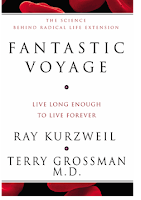I asked the following question on LinkedIn: “Are the Over-50s really interested in fitness and health?” The question went on: “I wonder if the Baby Boom generation….. is really into health and fitness? I spend a LOT of time in gyms and I hardly see anyone my age....” You can see the full Question and Answer via my profile on LinkedIn at http://hk.linkedin.com/in/quartermainebastin
Some folks thought this was an attack on them and the reactions were pretty irritated and defensive. Chris Prior Jones mistook me for a young guy having a go at the oldies and wrote,”We're really into fitness, you know! The reasons you don't see us are:
1 - The flaunting in the gym by you non-boomers of your sleek well toned physiques makes us extremely self conscious of our ancient sagging flesh
2 - We prefer to work out in the REAL world! Yes, open to the elements, braving the cold, rain, heat, dust, mud, difficult terrain etc. None of the airconditioned, muzak enhanced, information overloaded, expensive gym memberships for us!”
I clarified what I was after like this: “I'm getting the sense that older (plus-50) people want a completely different approach from the 'multi-machine, disco pumping' glossy fitness centers full of yuppies who socialize as much as they work out. Is this fair comment?”
It seems that it was, and it seems that the overwhelming majority of folks that answered were aggressively into fitness and health, but not necessarily the way I perhaps expected them to be.
Judy Margolis wrote, “I'd say that what separates Boomers from earlier generations is their endless quest to stave off old age, and that means they are extremely interested in health and fitness.”
Grant Epstein’s comment was rather typical of people who can’t answer an honest question politely, but he still made an interesting point, “I think your comment is based on at best limited perspective and at worst, absolute ignorance. The last time I belonged to a traditional gym, I would say a good 25-30% of the people I saw when working out early in the AM were over 50…..If you belong to a "traditional" gym, perhaps the gym does not cater to the over 50 market. Does it have a nice track to walk on? How about a swimming pool (great exercise, less impact on joints). Are their classes geared toward the over 50 market? Maybe your workout leans more towards that of a younger person.”
It’s a fair point about the kind of thing that’s on offer and echoes Chris’ concern about comparisons with tight young bodies.
Joel William, who says she is a physical therapist, wrote: “…although not all "Baby Boomers" are interested in health and fitness there is a significant amount that are and want to continue to be involved in exercise. These active boomers are not just playing golf either. They are avid cyclists, runners, swimmers and hikers. I refer to them as geezer jocks. I often see them after injury and their goal is not to settle down, but to get this fixed and return to their high level of sporting activity.”
The comment I liked best was from Andrea Williams who said: “…the importance of health and fitness is an innate quality, something you are born with. One of my personal goals before I turned 50 was to complete 30 marathons which I did. Now that I have turned 50, I was debating whether to continue to run marathons. However, my innate desire to keep in shape (both physically and mentally) got the better of me, and I just completed my 31st marathon at age 50. There are lots of older adults 50+ who enjoy running, and keep fit even and I am always amazed and humbled to see people in their 70s and older at local running events. I just hope that I can follow their wonderful example someday.”..
This seems to summarize exactly what this blog is about.
Other people like Charlene Norman work out at home: “I belong to the 50 set and still refuse to admit publicly my true age. I did the gym thing for a few years and found it exhausting with work etc. (okay handy excuse I agree) Like many of my similarly aging friends, I have equipment at home (pilates machine) which I prefer to use on my terms and at my convenience rather than rushing to the gym. Several friends of mine are in 50/60/70s and they have opted for either a home gym or using the gym in their condos. They prefer the privacy and the convenience and their own silence or music.”
Pretty clearly the over-50s that answered were quick to tell me that they were very conscious of fitness and health and a good few thought I was absolutely wrong to even suggest otherwise. That’s a great result (based admittedly on a very small sample – only 16 answers).
What’s my conclusion? The answer seems to be multi-faceted; partly to do with the way conventional fitness centers are run and partly to do with a lot of attitudes learned when we were younger before the 'fitness boom'; time and family commitments also play their parts. I’m enthusiastic about health and I’m sorry if my enthusiasm gets me carried away, and I certainly don’t mean to “hector” as Dr Susan Schwartz said (we became friends later!) but I do think that we over-50's needn't give in to ageing...that’s the reason for this blog!








